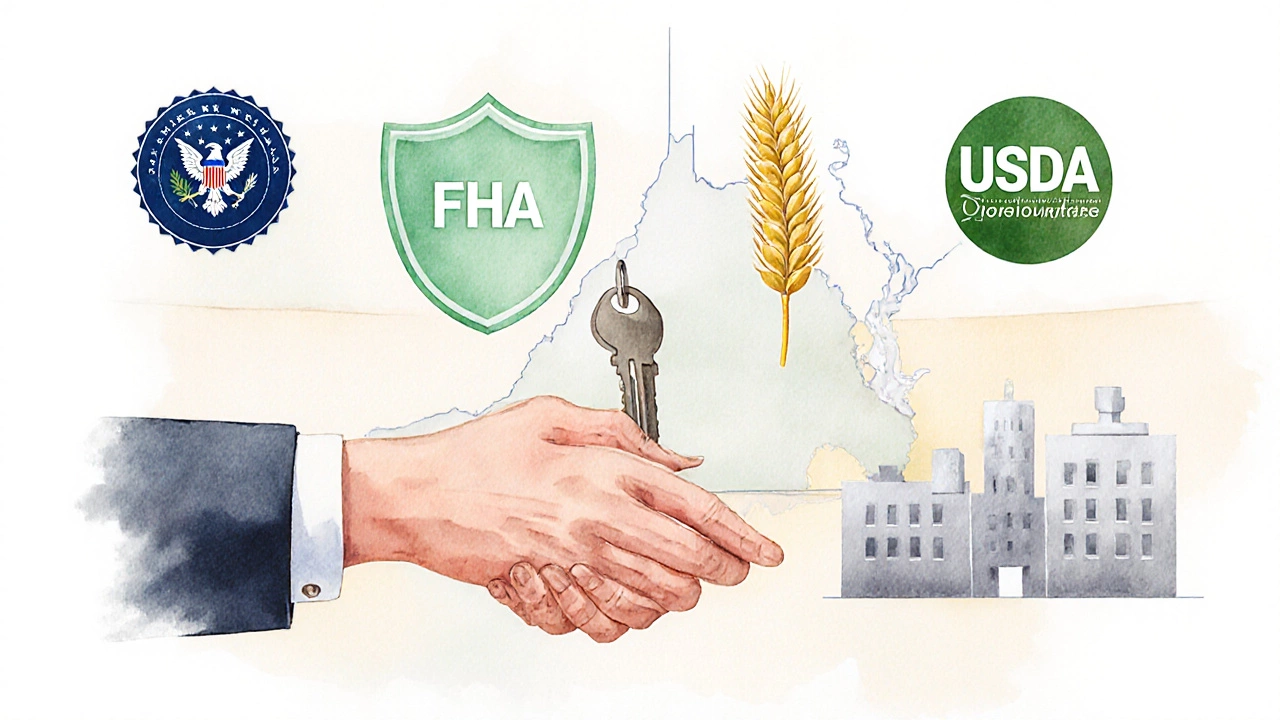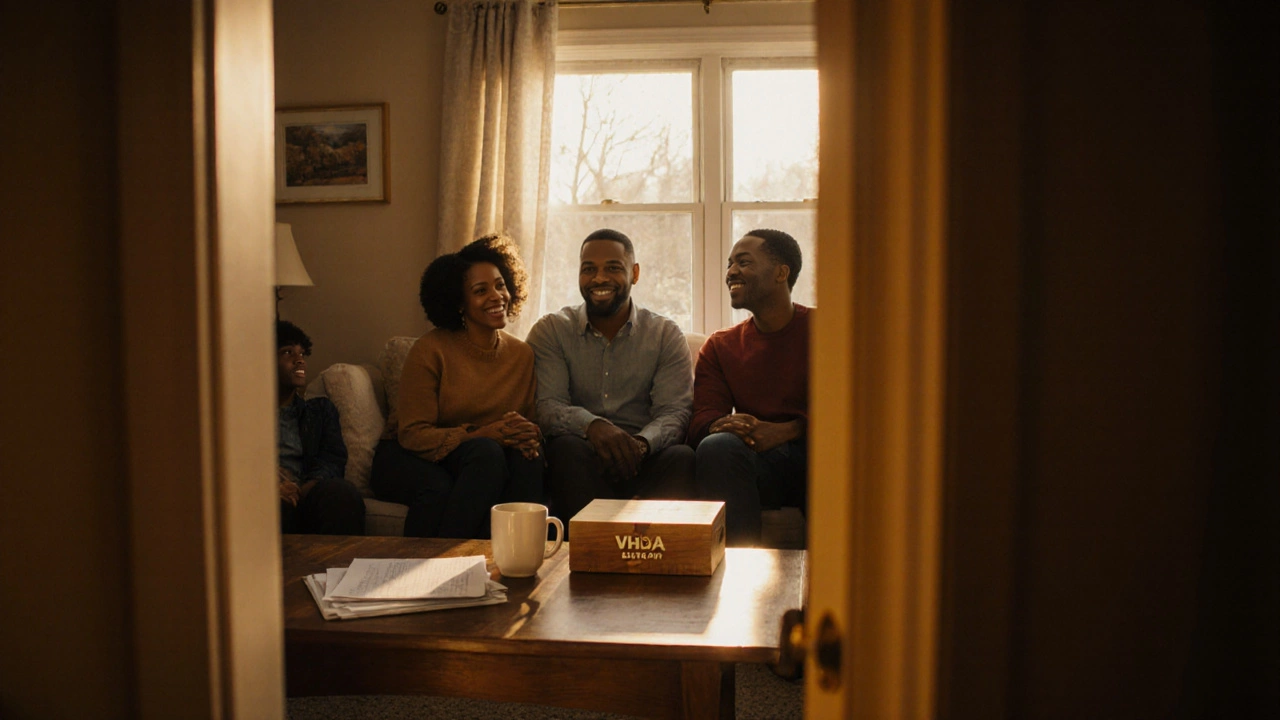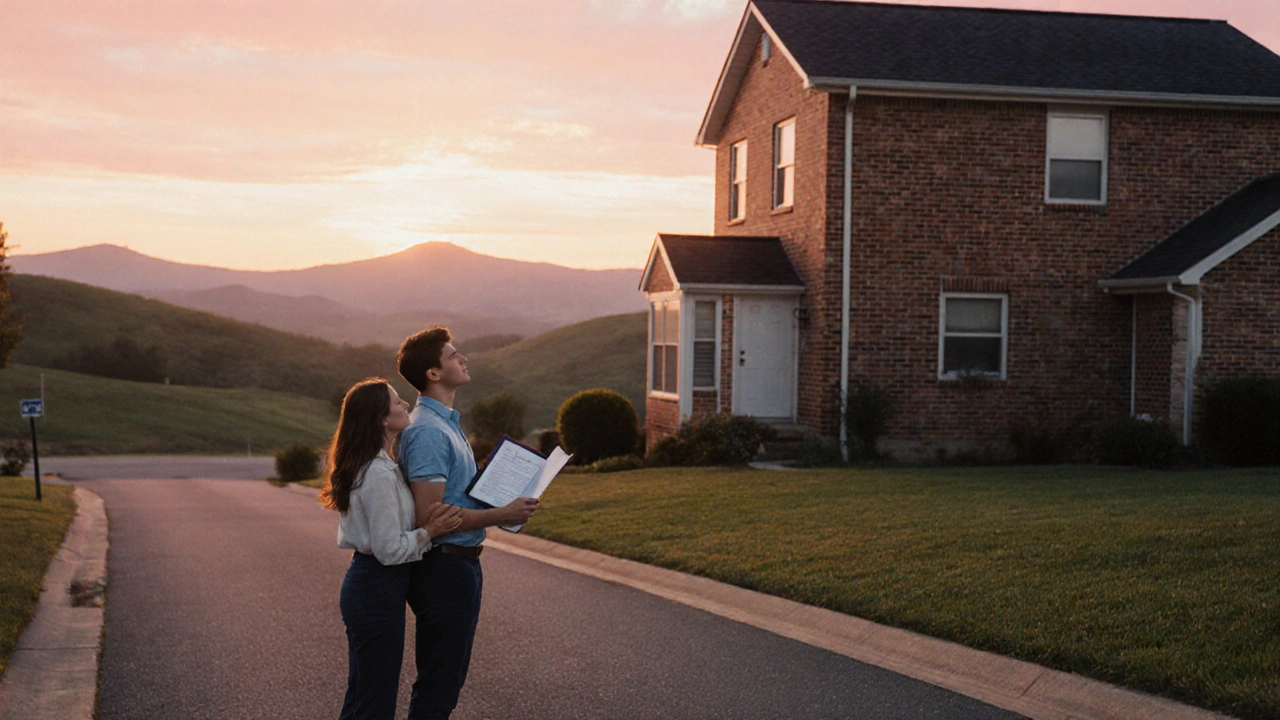If you’re eyeing a starter home in Virginia and you’ve never owned property before, the biggest question on most people’s mind is: how much cash do I need up front? The answer isn’t one‑size‑fits‑all-different loan types, credit scores, and state programs all affect the amount you’ll have to put down.
Key Takeaways
- VA loans let eligible buyers put down as little as 0%
- FHA loans require as low as 3.5% down for most borrowers
- Conventional loans generally start at 5% for first‑timers with good credit
- USDA loans can be 0% down for rural Virginia properties
- Virginia Housing Development Authority (VHDA) offers assistance up to $15,000
Understanding Down Payments for First‑Time Buyers in Virginia
When you hear “down payment,” think of the cash you hand over at closing to secure the loan. It reduces the lender’s risk and often lowers your monthly payment. In Virginia, the amount you need depends on three main factors:
- Loan program - VA, FHA, USDA, or conventional each have its own minimum.
- Credit profile - Higher scores can unlock lower‑down options.
- State assistance - Programs like VHDA can cover part of the gap.
First‑time buyers usually qualify for more flexible terms, but you still need to meet basic eligibility rules.
Loan‑by‑Loan Down Payment Requirements
Below is a quick snapshot of the most common loan types you’ll encounter in Virginia. The numbers reflect the minimum down payment for a primary residence as of October2025.
| Loan Type | Minimum Down Payment | Typical Credit Score Needed | Key Eligibility Note |
|---|---|---|---|
| VA Loan | 0% | 620+ | Must be eligible veteran, active‑duty, or qualifying spouse |
| FHA Loan | 3.5% | 580+ | All borrowers need FHA‑approved mortgage insurance |
| USDA Rural Development | 0% | 640+ | Property must be in qualified rural area (many VA counties qualify) |
| Conventional (Fannie/Freddie) | 5% (often 3% for qualified first‑timers) | 620+ | Private mortgage insurance required if < 20% down |
VA Loans: Zero Down for Eligible Service Members
When you hear the phrase Virginia first‑time home buyer down payment refers to the cash you must provide upfront, but for VA loans that amount can be zero, it’s because the Department of Veterans Affairs backs the loan. This guarantee lets lenders skip the traditional down‑payment requirement.
To qualify, you need one of the following:
- Honorable discharge after at least 90 days of active service
- Current active duty status
- Spouse of a service member who died in the line of duty
Even with 0% down, you’ll still pay a funding fee (usually 1.4% of the loan amount for first‑time buyers). The fee can be rolled into the loan, so you don’t need extra cash at closing.

FHA Loans: Low Down, Higher Mortgage Insurance
The Federal Housing Administration’s program is popular because it accepts credit scores as low as 580 and only asks for a 3.5% down payment. In Virginia, many first‑time buyers use FHA because the loan is available to anyone who meets the basic income‑to‑debt rules.
What you’ll pay extra:
- Up‑front mortgage insurance premium (UFMIP) of 1.75% of the loan amount
- Annual mortgage insurance (typically 0.85% to 1.05% of the loan)
Those insurance costs are spread over the life of the loan, making the monthly payment a bit higher than a comparable conventional loan.
USDA Loans: Rural Properties, No Down Payment
If you’re looking at a home in a qualifying rural area of Virginia - think Shenandoah Valley, parts of Southwest Virginia, or even some ex‑urban spots around Richmond - the USDA Rural Development loan could let you buy with 0% down.
Eligibility hinges on household income (usually capped at 115% of the area median income) and the property’s location. The loan requires a 1% upfront guarantee fee and a 0.35% annual fee, which are lower than FHA’s insurance costs.
Conventional Loans: Flexible But Usually Require 5% Down
Conventional mortgages aren’t backed by the government, so lenders set their own down‑payment rules. For first‑time buyers in Virginia with a credit score of 620 or higher, the minimum can be as low as 3% when you qualify for the “Fannie Mae HomeReady” or “Freddie Mac Home Possible” programs.
If you put down less than 20%, you’ll pay private mortgage insurance (PMI). PMI typically ranges from 0.3% to 1.5% of the loan amount per year and drops off automatically once you reach 20% equity.

Virginia State Assistance: VHDA Programs
The Virginia Housing Development Authority (VHDA) runs several assistance programs that can bridge the gap between your cash on hand and the required down payment. Two of the most used options are:
- Down Payment Assistance (DPA) Grant - Up to $15,000 that doesn’t need to be repaid, as long as you stay in the home for at least five years.
- Second Mortgage - A low‑interest, deferred second loan that can cover part of the down payment; repayment starts only when you sell or refinance.
Both programs require you to complete a homebuyer education course and meet income limits (generally 80% of the area median income).
Calculating What You’ll Need in Cash
Here’s a simple step‑by‑step method to estimate your total cash‑out requirement:
- Pick your loan type and note the minimum down‑payment percentage.
- Multiply the home’s purchase price by that percentage. (e.g., $300,000 × 3.5% = $10,500).
- Add estimated closing costs - typically 2% to 3% of the price. (e.g., $300,000 × 2.5% = $7,500).
- Factor in any required insurance premiums (FHA UFMIP, VA funding fee, USDA guarantee fee).
- Subtract any grant or DPA amount you qualify for.
For a $300,000 home using an FHA loan with a 3.5% down payment, 2.5% closing costs, and a 1.75% UFMIP, the calculation looks like this:
- Down payment: $10,500
- Closing costs: $7,500
- UFMIP (1.75% of loan): $5,062.50
- Total cash needed before assistance: $23,062.50
- VHDA DPA grant (max $15,000): -$15,000
- Final cash outlay: $8,062.50
That final number is what you’ll need to bring to the closing table.
Common Pitfalls and Pro Tips
- Don’t ignore the funding fee. VA borrowers often think 0% down means no cost. The fee can be a few thousand dollars if you’re buying a $400,000 home.
- Watch your debt‑to‑income (DTI) ratio. Lenders cap DTI at around 45% for most programs; high existing debt can force a larger down payment.
- Maintain a good credit score. Even a 20‑point bump can move you from a 5% to a 3% down‑payment tier on conventional loans.
- Plan for reserves. Some programs (especially FHA) require you to have a few months of mortgage payments saved after closing.
- Take the homebuyer education. It’s free, often required for VHDA assistance, and it can reveal hidden costs you might otherwise miss.
Frequently Asked Questions
Can I qualify for a VA loan if I’ve never owned a home before?
Yes. VA loan eligibility is based on military service, not home‑ownership history. First‑time buyers can get 0% down, but they still need to meet credit and income standards.
What is the lowest down payment I can make on a conventional loan in Virginia?
If you qualify for the HomeReady or Home Possible program, the minimum can be 3% of the purchase price. You’ll need a credit score of at least 620 and must meet income limits for those programs.
Do I still need to pay closing costs even with 0% down?
Absolutely. Closing costs (title, appraisal, attorney fees, etc.) typically run 2%‑3% of the loan amount. Some lenders may offer a “no‑closing‑cost” option, but that usually means they’ll roll the fees into a higher interest rate.
How does VHDA assistance affect my mortgage rate?
VHDA’s grant or second‑mortgage assistance does not directly change the interest rate. However, by lowering your required cash outlay, you may be able to qualify for a lower‑rate loan that you otherwise couldn’t afford.
What happens if I run out of cash after the down payment?
Lenders usually require a few weeks of reserve funds to cover unexpected expenses. If you fall short, you might need to renegotiate the loan, ask the seller for a credit, or look for additional assistance programs before closing.
Bottom line: Virginia offers multiple pathways for first‑time buyers to put down far less than the traditional 20% you might have heard about. By picking the right loan, checking your credit, and tapping state assistance, you can often get into a home with as little as a few thousand dollars in the bank.
Ready to start the process? Gather your pay stubs, check your credit score, and explore the VHDA website for the latest assistance caps. From there, you’ll be on solid ground to make an offer and move toward homeownership in the Old Dominion.


Corbin Fairweather
I am an expert in real estate focusing on property sales and rentals. I enjoy writing about the latest trends in the real estate market and sharing insights on how to make successful property investments. My passion lies in helping clients find their dream homes and navigating the complexities of real estate transactions. In my free time, I enjoy hiking and capturing the beauty of landscapes through photography.
view all postsWrite a comment